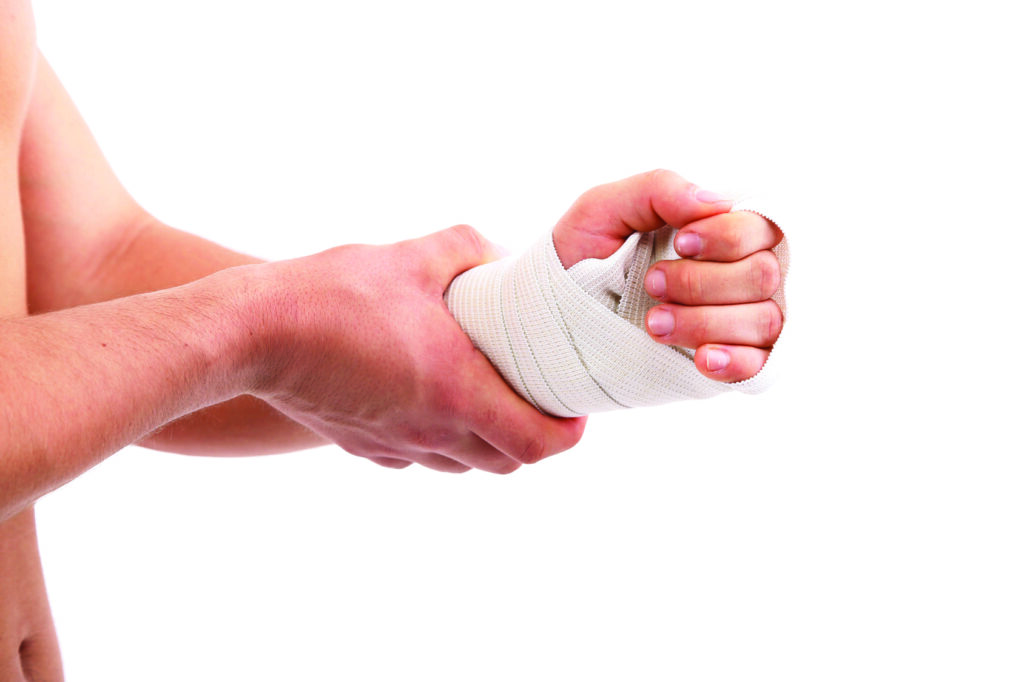Q&A with Jim Goodwin on how you can safely work out with an Injury
When recovering from an injury, it’s tempting to lay off your fitness routine. That’s not always a good idea, however. Central Florida Health News talked with Jim Goodwin, director of Rehabilitation Services at Bartow Regional Medical Center, about the best way to exercise with an injury.
Central Florida Health News (CFHN): Why should people exercise when they have an injury? What are the benefits?
Jim Goodwin: If able, depending on the injury, the person should try to maintain their cardiovascular fitness. Maintaining a healthy cardiovascular system can help aid healing by allowing the body to best use minerals and nutrients at the injury site. Also, studies have shown that healing hormones needed for protein synthesis and tissue healing are released.
CFHN: In general, what are the best types of exercises to do when you have an injury?
Goodwin: Any exercise that does not irritate the injured extremity is best. For upper extremity injuries, lower body works outs, stationary biking, and walking will help improve overall healing. For lower extremity injuries, riding an ergometer (hand bike for the upper extremities) and doing free weight exercises, or stationary machines also are helpful.
The intensity of the workout seems to be just as important as the length. Studies regarding the healing of injured tissues suggest short bursts of vigorous exercise throughout the day have some validity.
CFHN: What types of injuries improve with exercise? A muscle strain?
Goodwin: A muscle strain, depending on the injury, will take days to weeks to heal. The key is always to attempt to maintain good range of motion in the joint without irritating the healing tissue, or creating a more significant problem by reinjuring or exacerbating the problem by ‘pushing through the pain.’ It is always hard for the athlete who is very dedicated to their sport, and/or the regular person who sees working out as a hobby, to lay off the injured body part and let it heal. They sometimes will come back too soon. The biggest ally for injury recovery—as long as it is not a true orthopedic/soft tissue problem that needs the care of an orthopedic surgeon—is time.
CFHN: When injured, is it best to exercise under the supervision of a physical therapist? When is it okay to do the exercises at home or at a gym?
Goodwin: In the Acute Rehab Phase (right after the injury), soft tissue injuries in the muscular or connective tissue—that do not need the reparative skill of the medical doctor—really do benefit from the physical therapist’s expertise. Any good therapist will always give the injured person a thorough Home Exercise Program that will consist of anti-inflammation, stretching, and functional strengthening.
Once given the exercises, these can serve as a guide for the rehabilitation process. Depending on the severity of the injury, continued aggressive physical therapy may be needed for a course of treatment to get the injured person back on track to recovery.
After the Acute phase is over and function is restored, it is always a good idea to regain training of the injured extremity once it is healed enough.
CFHN: As a general rule, should those with an injury limit the time they spend in exercise? If so, what is the standard amount of time?
Goodwin: After an injury, the amount of time spent in exercise depends on the individual. In order to recover as quickly as possible from injuries—particularly as we get older and our natural levels of anabolic hormones decrease—perform multiple short bouts of high-intensity exercise, throughout the day, in whatever way your injury allows you to do.
If you have leg injuries, lift some barbells. If you have arm or back injuries, do sprints on a stationary bike. If you’re confined to a hospital bed, lift some books. Do whatever you can without re-injuring yourself, because you will heal faster and more completely.
CFHN: If the injured person experiences pain, is this a clear indication to quit exercising and consult his or her healthcare provider?
Goodwin: Yes, if at any time they have increased pain, which does not get better, it would be a great idea to consult a physician. If the patient is in the acute phase after an injury, and there is any question about the extent of the injury, he or she should always consult a healthcare provider. Symptoms of elevated pain, redness, swelling, and decreased ability to use the injured extremity should not be taken lightly.
CFHN: Are there any other signs that would suggest exercising should be discontinued?
Goodwin: Pain, Pain, Pain. It is the body’s natural response to injury. Pain is telling you, “STOP, get some help.”
Make sure to talk to the professionals any time you have a question about the severity of an injury. Sometimes the ‘guy’ at the gym isn’t qualified to help you find the relief you need.
